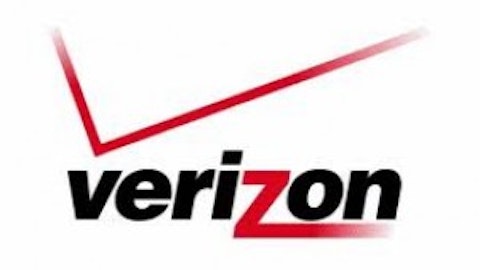It seems I’ve lost quite a few friends following my recent article on Juniper Networks, Inc. (NYSE:JNPR) . But I’ve said some things that needed to be said. Specifically, it’s time that investors forget this perceived rivalry with Cisco Systems, Inc. (NASDAQ:CSCO). These are two companies in separate leagues that are now heading in opposite directions.

While networking/security sector often trades in tandem, investors are mistaken in thinking that the challenges facing one company are the problems of another. This is not often the case. Juniper’s growth story, as well as that of F5 Networks, Inc. (NASDAQ:FFIV) and Riverbed Technology, Inc. (NASDAQ:RVBD) are strongly predicated on the rebound in carrier spending. Consequently, they are always in a holding pattern.
That’s not the scenario with Cisco, which has much stronger exposure in the enterprise, and thus the thesis of my recent comparison to Juniper. While a rebound in carrier spending can help these shares, Juniper still has to answer for its lack of growth as evident by the 2% revenue improvement in its recent quarter.
Plus, there are also uncertainties about threats to Juniper’s long-term margins, not only from current rivals, but now it must outperform Oracle Corporation (NASDAQ:ORCL) after the database giant just picked off Acme Packet, Inc. (NASDAQ:APKT) for $2.1 billion. While it can be argued that this move by Oracle was more of an attempt to shore up its cloud offerings, thanks to Oracle’s existing enterprise footprint the company can now easily undercut Juniper with packaged deals.
What’s more, Oracle does not have to wait on carriers to strengthen revenue. And Oracle’s higher-margin cloud service business can be used to offset any potential weakness in hardware. This is not an advantage that Juniper enjoys today. However, in the recent quarter, Juniper’s service revenue did well by advancing 7% sequentially and 5% year over year.
However, it is still trailing Cisco’s 12% growth. The good news is Juniper is doing well in terms of profitability and cost management. Gross margin grew by two percentage points year over year and beat analysts’ estimates by a full point. Likewise, operating income was solid at 18%. The company was able to exceed its own guidance of 16% while topping consensus estimates by over two points.
That’s was the good news. But the report also highlighted some glaring weaknesses, not the least of which is that more than two-thirds of Juniper’s revenue comes from the likes of AT&T Inc. (NYSE:T) and Verizon Communications Inc. (NYSE:VZ). This is the “holding pattern” that I’ve mentioned above. Essentially, until these guys open up their wallets and start buying more gear, Juniper’s hands are tied.
In other words, Juniper is unable to make capital investments until it knows clearly where its next meal is going to come from and what portion it will be given. Meanwhile, Cisco, which has $45 billion in cash versus Juniper’s $2.8 billion, has been spending like there’s no tomorrow.
Juniper’s production was anything but robust. Nonetheless, investors cheered and sent the stock up more than 8%. In this case, “less bad” was good enough, whereas Cisco has to dominate every earnings announcement just to be considered good. Meanwhile, Cisco enjoyed no such fanfare even though this was the company’s seventh consecutive earnings beat.
By comparison, it would then make sense for shares of Cisco, which sports a P/E of 13, to rise, especially since the company is clearly outperforming Juniper, which has a P/E of 63. Then again, for Juniper, I’m willing to consider that this quarter just might have been a step in right direction, seeing as service revenue rose 9% year over year.
In some respects, this supports the bet investors are making that carrier spending recovery has already begun. And despite Juniper’s recent focus on cost management, it’s encouraging that the company just spent $176 million for Contrail Systems, a company that develops software to update and configure networking equipment.
Clearly this move suggests that Juniper has no intentions to stop fighting for market share. While this acquisition will help Juniper compete more effectively against the smaller players such as F5 and Riverbed, I wouldn’t get excited thinking that Cisco is now terrified, especially since this move does not immediately shore up Juniper’s enterprise position.
Nonetheless, this is a situation worth monitoring. And if Juniper can effectively synergize this deal while making fundamental improvements, this stock might have again. But it’s not there yet. Plus, Juniper has to find ways to lessen its dependency on carriers and better diversify is product/service portfolio.
Although the company has done well exploring ways to grow its security business, it has not done enough. And this is a market with enormous potential that is just beginning to bloom. And if Juniper is not careful, it will find itself on the outside looking in as new entrants such as Palo Alto Networks Inc (NYSE:PANW) and Aruba Networks, Inc. (NASDAQ:ARUN) begin to plant flags.
Finally, the company just needs better execution. Tech stocks are not supposed to post 2% revenue growth. This is unheard of. The optimism is not justified — especially not at this valuation.
The article It’s Time to Get Off the Juniper Bandwagon originally appeared on Fool.com and is written by Richard Saintvilus.
Fool contributor Richard Saintvilus has no position in any stocks mentioned. The Motley Fool recommends Acme Packet, Cisco Systems, F5 Networks, and Riverbed Technology. The Motley Fool owns shares of F5 Networks, Oracle, and Riverbed Technology.
Copyright © 1995 – 2013 The Motley Fool, LLC. All rights reserved. The Motley Fool has a disclosure policy.





